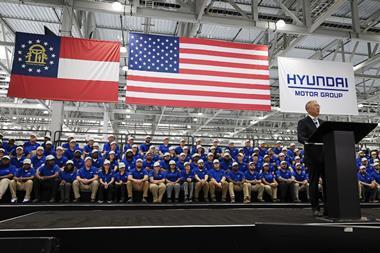
Inefficient processes, inadequate infrastructure and multiple tax structures are being blamed for the excessive cost of logistics in India, according to a new report from CRISIL Research, the country’s largest independent research house. But the findings suggest that greater efficiency can be achieved by outsourcing to 3PLs, supported by more favourable regulatory measures being introduced by the Indian government. In terms of the automotive sector, the low-cost car model is also expected to extensively change current logistics practice according to business research company SupplierBusiness.
CRISIL estimates the total logistics spending covering both primary and secondary movement to be around 10.7% of India’s GDP in 2008-9, significantly higher than the 5-7% seen across developed nations.
But the proposed implementation of the Goods and Services Tax (GST) from the beginning of April next year is expected to result in the greater adoption of the hub and spoke model, whereby material is moved to central facilities for onward distribution, reducing the number of intermediaries and streamlining supply chain operations. The more rational GST, along with investment-linked tax deductions and the development of logistics parks and free trade warehousing zones, will establish an environment more conducive to efficiently networked logistics, says the report. These measures will allow the Indian 3PL segment to maximise revenue growth over the next five years, expected to grow around 27% annually, which would see an increase from an estimated Rs 48 billion ($1 billion) in 2008-09 to around Rs 163 billion in 2013-14.
Logistics outsourcing to 3PLs is relatively limited in India but is expected to increase to include services such as repackaging and reverse logistics. Continental India, for example, is now planning to use 3PL solutions for warehousing and distribution in the aftermarket and for OEM exports. “In Bangalore, as our business grows, we would need an outside warehouse location that would enable space reduction and inventory reduction for new projects,” the company’s Chief Manager of Logistics, Vinay Acharya, told Automotive Logistics recently. “The 3PL would operate such a consignment warehouse.”
For the low-cost car model Supplier Business has reported that although large OEMs such as Maruti Suzuki and Tata Motors tend to handle their freight functions in-house, small-and-medium sized carmakers have recently sought end-to-end logistics services from other providers. Ford and Hyundai, for example, are using TCI and TVS Logistics in areas including JIT, area forwarding and vendor-managed inventory modelling.
Elsewhere, Volkswagen India is working with Ceva Logistics in areas such as line-side and in-plant logistics, warehousing and IT development. For outbound it is working with Mosolf Group and is working with other carmakers on rail movements for vehicles.
As 3PL initiatives gain wider acceptance in India reductions in inventory, lower infrastructure space and reduced transport costs are expected to grow revenue in the 3PL segment resulting in added value for carmakers.
“A well developed and networked logistics industry is imperative for the success and overall growth of the economy,” said Manoj Mohta, Head of CRISIL Research. “Strong growth in economic fundamentals, favourable regulatory environment and greater thrust on logistics infrastructure development would be the key factors driving logistics growth.”
For more on the Indian automotive 3PL market, see the regional report on India in the October-December issue of Automotive Logistics, published next week. These topics and more on Indian automotive logistics will also be discussed in Pune at the Automotive Logistics India conference December 2nd-4th this year.

























![Global[1]](https://d3n5uof8vony13.cloudfront.net/Pictures/web/a/d/s/global1_726550.svgz)










